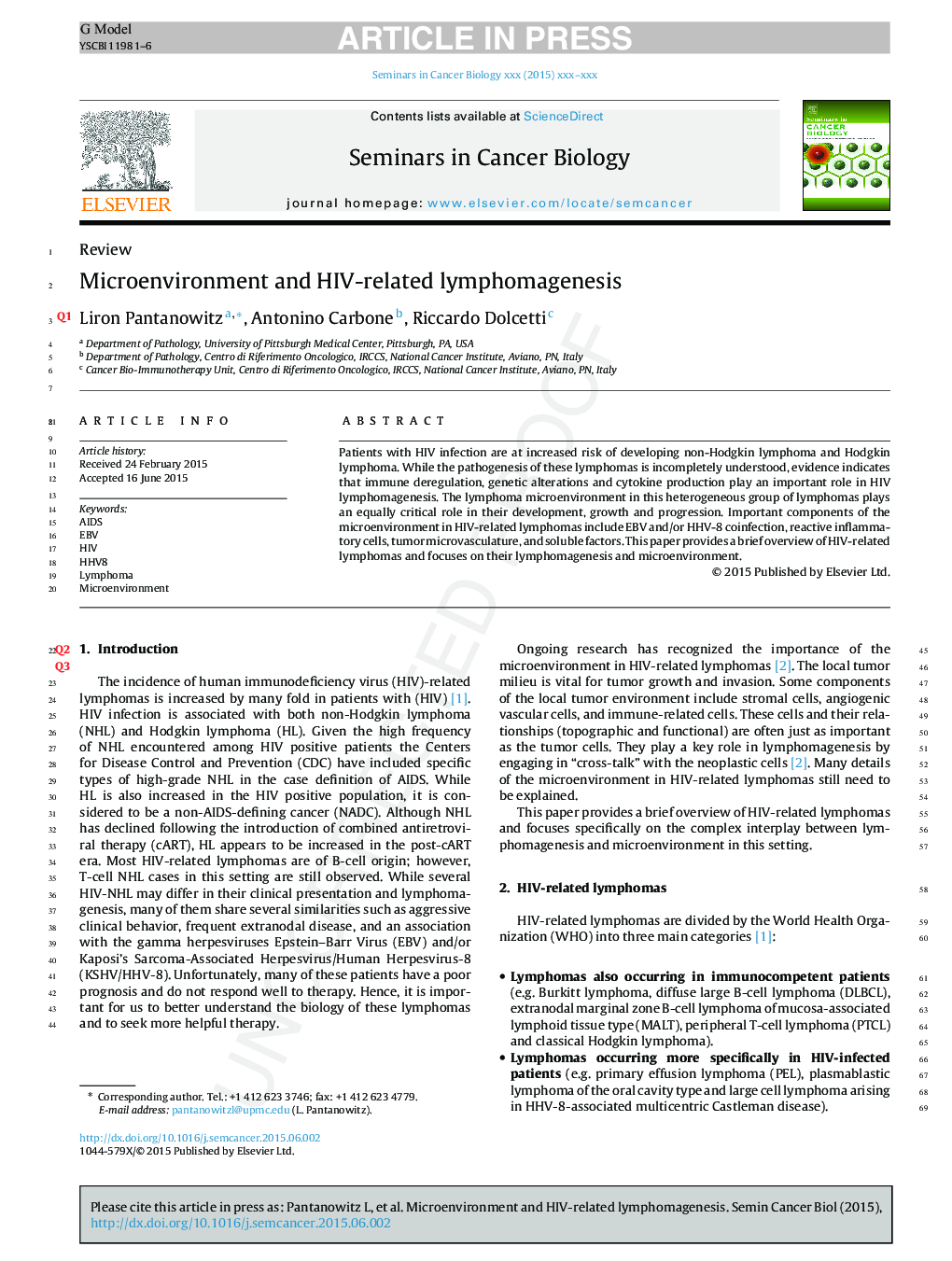| Article ID | Journal | Published Year | Pages | File Type |
|---|---|---|---|---|
| 8362233 | Seminars in Cancer Biology | 2015 | 6 Pages |
Abstract
Patients with HIV infection are at increased risk of developing non-Hodgkin lymphoma and Hodgkin lymphoma. While the pathogenesis of these lymphomas is incompletely understood, evidence indicates that immune deregulation, genetic alterations and cytokine production play an important role in HIV lymphomagenesis. The lymphoma microenvironment in this heterogeneous group of lymphomas plays an equally critical role in their development, growth and progression. Important components of the microenvironment in HIV-related lymphomas include EBV and/or HHV-8 coinfection, reactive inflammatory cells, tumor microvasculature, and soluble factors. This paper provides a brief overview of HIV-related lymphomas and focuses on their lymphomagenesis and microenvironment.
Related Topics
Life Sciences
Biochemistry, Genetics and Molecular Biology
Biochemistry
Authors
Liron Pantanowitz, Antonino Carbone, Riccardo Dolcetti,
